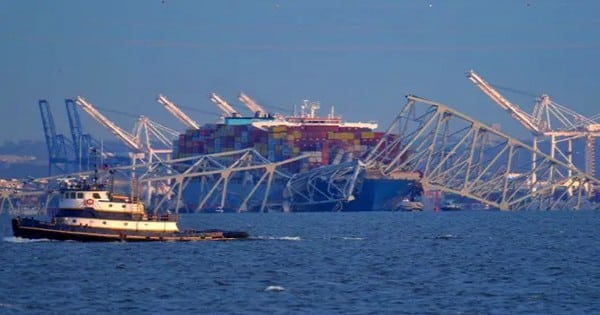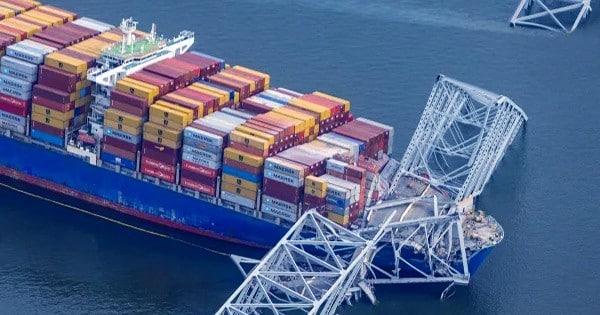On March 26, at 01:27 a.m. EDT (05:27 a.m. UTC), the Baltimore Francis Scott Key Bridge collapsed. The Singapore-flagged container ship Dali crashed with one of the bridge’s pillars, resulting in the structure’s devastating collapse. At the time, there were workers on the bridge, and the Baltimore City Fire Department reported that at least seven automobiles had fallen into the water. At the time of writing, the number of casualties was unclear.
The bridge, named after the author of The Star Spangled Banner, joined the two banks of the Patapsco River and was the world’s third-longest continuous truss bridge, spanning 366 meters (1,200 feet). Continuous truss bridges have been popular since the nineteenth century, and, like all bridge designs, they have advantages and disadvantages.
Unlike cantilever bridges, which require a structure protruding horizontally from robust supports, a truss bridge is built of a superstructure of trusses, which are often triangular sections that allow the distribution and dispersal of the tension, compression, and stresses that a bridge would face. In the case of a continuous truss bridge, the truss superstructure extends without hinges across three or more supports.

In this scenario, the support was destroyed when it was hit by a fast-moving object. Without the support, the entire structure became unstable; the superstructure could no longer support the weight of the bridge.
“The support is a very, relatively, flimsy structure when you look at it, it’s a kind of trestle structure with individual legs,” Ian Firth, a structural engineer and bridge designer, told BBC News. “So, the bridge has collapsed simply as a result of this very large impact force.”
Continuous truss bridges are known to be statically indeterminate in structural mechanics, which implies that knowing all of the forces and moments operating on the bridge in equilibrium is insufficient to estimate the structure’s internal forces and responses. Computers have helped to increase the popularity of these bridges since they can better calculate the stresses in the structure.
“This is similar to the Sunshine Skyway disaster in 1980,” Northwestern University Professor Joseph Schofer stated in an emailed statement. “The Baltimore Key Bridge is susceptible due to its design. It is a poorly protected support pylon on the cantilever arch bridge that spans Baltimore Harbor, the country’s 15th busiest container port. Its collapse resulted in the destruction of a critical bridge for moving hazardous vehicles along the I-95 corridor. Tunnels are another option for crossing Baltimore Harbor, however hazmat trucks are not allowed. The bridge requires a complete rebuild, which will be a lengthy and costly project.”














